The Everglades in Summer
No Comments
Being sub-tropical, South Florida has only two different seasons. The wet season starts around the middle of May and continues through to November with the last major storms. During this time, South Florida gets a lot of rain and everything gets really wet. The dry season runs from December through April. During this season, everything starts to dry up in a short amount of time. Not only are temperatures cooler, but the dryer air also make the air feel more crisp.
In the past, I had always recommended a winter visit to the Everglades, writing for instance in a handout for my 2010 NANPA Summit presentation: “During the rainy summer season, water submerges most of the Everglades, spreading out the wildlife. As water bodies shrink during the dry winter season, countless birds gather at the water holes, making it easy to photograph them. Winter offers the smallest concentration of mosquitoes in Everglades and Biscayne, as well as pleasant conditions, while summers are hot and humid.”
Common wisdom agrees, since the high tourist season in South Florida is indeed winter, when prices for lodging climb sharply and Everglades National Park schedules most of its activities. Many photographers come to the Everglades primarily to photograph the birds, for which winter is the season of choice. However, not all photographers operate under common wisdom. For my specialty, landscape photography, I had long guessed that summer could actually present the best conditions. This summer, I had the chance find out for myself.
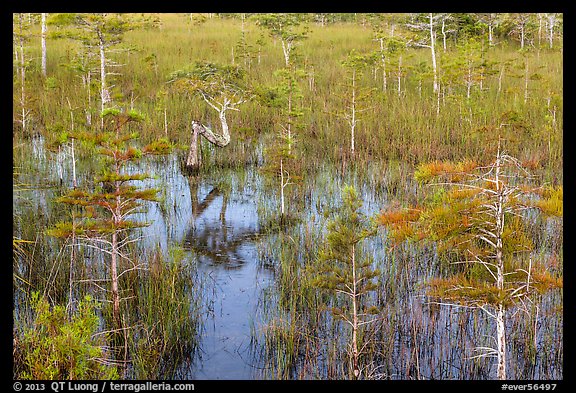
At first glance, I noticed that during the wet season, the vegetation looks green and lush, whereas in winter it is kind of brown and dead-looking. High water levels enable beautiful reflections.
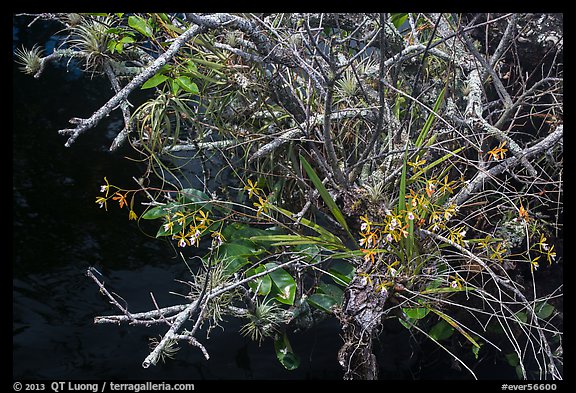
I saw this native Butterfly Orchid, which blooms only during the summer, as well as the Pond Apple, and several others.
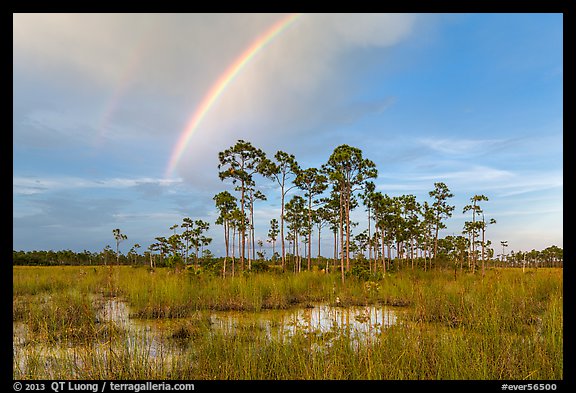
During the winter skies are often cloudless all day. In summer powerful afternoon storms move in daily. Those storms are often localized, with an extension of less than 10 miles, so the sky is not all overcast. This means dramatic skies, an important element in a very flat landscape.
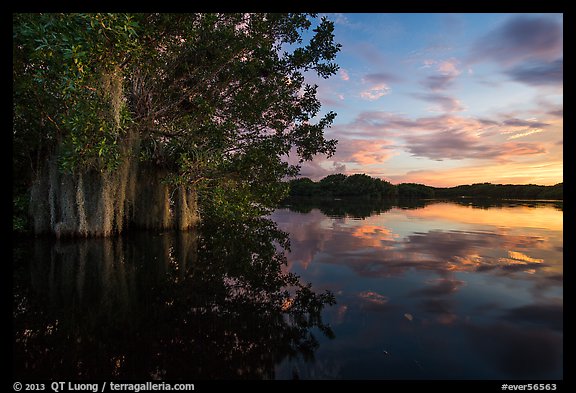
Clouds also translate into beautiful sunsets. Behind this serene image, some danger lurked. Paurotis Pond in Everglades National Park is bordered by thick vegetation with just a few openings, so to get a good perspective I had to wade in the water while keeping an eye for an alligator hanging out at the other end.
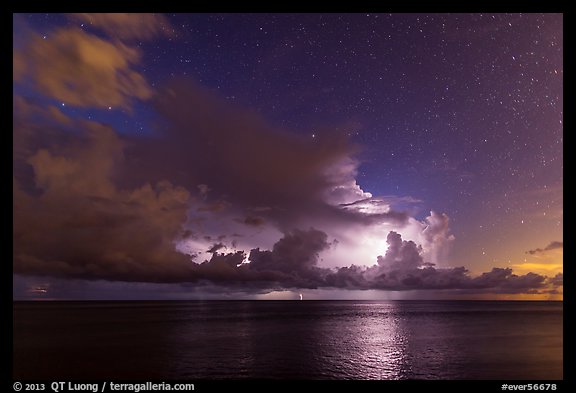
The super-heated storms produce frequent lightening, relatively easy to photograph because the storms are so localized. While it takes some luck to capture such an image with a single frame, setting up the camera to fire long-exposure continuously, I was sure not to miss anything and I got a time-lapse as well.
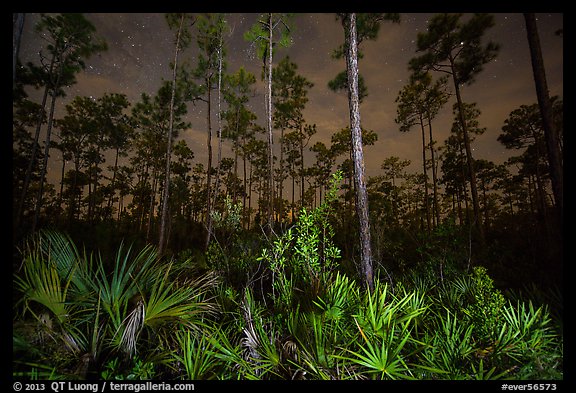
The state of Florida spends a great deal of resources to control the mosquito population, particularly in high tourist areas like the Keys. Of course, such programs are not applied in a protected area such as Everglades National Park. I was surprised that mosquitoes weren’t much of a problem during the day even in the heart of the park. However, at night they were definitively in full force, even in the pinelands, which is the areas where they are normally the less dense.
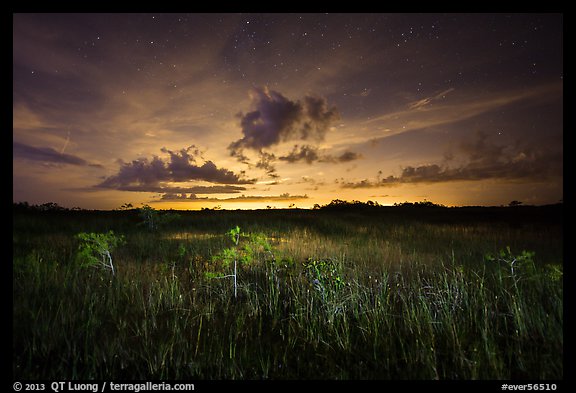
In the swampy areas – which is to say most of the Park – bugs got much worse. However, I came well equipped, with the Bug Shirt based on a recommendation from local photographer Paul Marcellini (do not miss his excellent Everglades Photography E-book if heading towards the area). Even though, it was difficult to concentrate because of the loud buzzing around. The mesh used to keep mosquitoes off your face also makes everything look darker, which does not help at night. I used my headlamp, standing on the side for cross-lighting, to illuminate the dwarf pond cypress. Light on the horizon is from the Miami metro area. The clouds continued to enhance the sky, even at night !
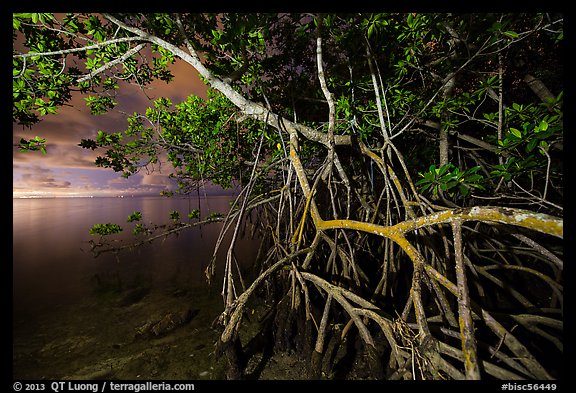
I felt confident enough in my bug protection to walk a mile (each way) into Biscayne National Park, to photograph the mangrove coast at night, when the access road was closed. During the day, the light is always difficult there, but at night a lantern provided nice illumination for an image not commonly seen.
On this trip, I actually spent the bulk of my time in the Dry Tortugas, where the summer conditions were great, but based on what I saw, despite the uncomfort of the season, I plan to return at some point to the Everglades in summer.
See more images of Everglades National Park

